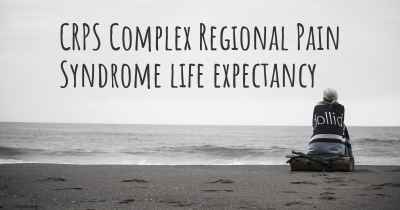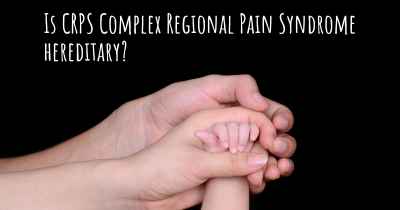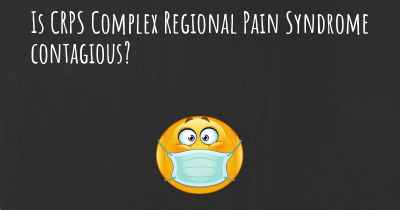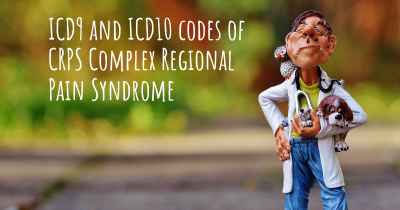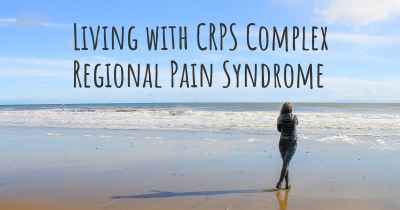How do I know if I have CRPS Complex Regional Pain Syndrome?
What signs or symptoms may make you suspect you may have CRPS Complex Regional Pain Syndrome. People who have experience in CRPS Complex Regional Pain Syndrome offer advice of what things may make you suspicious and which doctor you should go to to receive treatment
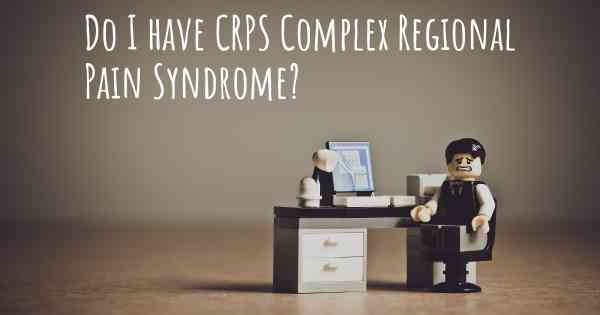
How to Determine if You Have CRPS (Complex Regional Pain Syndrome)
Complex Regional Pain Syndrome (CRPS) is a chronic pain condition that typically affects one limb, often after an injury or trauma. It is characterized by intense and prolonged pain, changes in skin color and temperature, swelling, and sensitivity to touch. Diagnosing CRPS can be challenging as there is no specific test for it, but a combination of symptoms, medical history, and physical examination can help determine if you have this condition.
1. Recognize the Symptoms
CRPS symptoms can vary from person to person, but some common signs to look out for include:
- Continuous, intense pain: The pain experienced with CRPS is often described as burning, throbbing, or shooting. It may be disproportionate to the initial injury or trigger.
- Changes in skin color and temperature: The affected limb may appear blotchy, pale, or red. It may also feel warmer or cooler than the surrounding areas.
- Swelling and stiffness: The limb may become swollen, and the joints may feel stiff and difficult to move.
- Sensitivity to touch or cold: Even a light touch or exposure to cold temperatures can cause extreme pain or discomfort.
- Changes in hair and nail growth: Hair and nails on the affected limb may grow faster or slower than usual.
2. Consult a Healthcare Professional
If you experience persistent and unexplained pain, it is important to consult a healthcare professional, preferably a pain specialist or neurologist. They will evaluate your symptoms, medical history, and conduct a physical examination to assess the possibility of CRPS.
3. Diagnostic Tests
While there is no definitive test for CRPS, your healthcare provider may order certain tests to rule out other conditions and support a CRPS diagnosis. These tests may include:
- X-rays: To check for bone fractures or other abnormalities.
- Bone scans: A nuclear medicine test that can detect changes in bone metabolism.
- Magnetic Resonance Imaging (MRI): This imaging test can provide detailed images of soft tissues, bones, and nerves.
- Skin temperature tests: Using a thermographic camera to assess temperature differences between the affected and unaffected limbs.
- Sweat tests: Measuring sweat production to evaluate autonomic nervous system function.
4. Consult a Specialist
If CRPS is suspected, your healthcare provider may refer you to a pain specialist or a neurologist who has expertise in diagnosing and treating this condition. These specialists will further evaluate your symptoms and may perform additional tests or procedures to confirm the diagnosis.
5. Treatment and Management
If diagnosed with CRPS, early intervention is crucial for better outcomes. Treatment options may include:
- Pain medications: Over-the-counter or prescription medications to manage pain and inflammation.
- Physical therapy: Exercises and techniques to improve mobility, strength, and reduce pain.
- Sympathetic nerve blocks: Injection of anesthetic near the affected nerves to provide temporary pain relief.
- Spinal cord stimulation: Implanting a device that delivers electrical impulses to the spinal cord to alleviate pain.
- Psychotherapy: Cognitive-behavioral therapy or counseling to help cope with the emotional impact of chronic pain.
Remember, this information is not a substitute for professional medical advice. If you suspect you may have CRPS, consult a healthcare professional for an accurate diagnosis and appropriate treatment.
Posted Sep 6, 2017 by [email protected] 5060
Posted Sep 11, 2017 by Craig 1600
Posted Sep 13, 2017 by Andy 3550
There may also be:
• Changes in skin temperature, with the skin becoming sweaty at times, and cold and clammy at others
• Changes in skin color, causing blotches or streaks, ranging from very pale to pink, and perhaps even with a blue tinge
• Thin and shiny skin texture
• Unusually fast or slow nail and hair growth
• Painful, stiff and inflamed joints.
• Mobility may also be reduced, as patients find it hard to move the affected part.
CRPS must be diagnosed by a medical doctor, preferably someone with a specialty in pain management.
Posted Sep 15, 2017 by DrLisa 3750
Posted Sep 19, 2017 by Alex 2550
Posted Oct 8, 2017 by Valerie 1500
Posted Nov 11, 2017 by Robbie 2000
You may have tingling, hyper sensitive to touch, textures and cold and heat. Your skin will look different and may be ice cold, flame red or even blue. You affected area may continually throb and more
Posted Nov 11, 2017 by Aj 2000
Posted Nov 11, 2017 by Colleen85201 1700
Posted Nov 12, 2017 by Shanna 5000
Posted Nov 12, 2017 by ladyff1481 2050
Posted Nov 12, 2017 by Thea 3150
Posted Oct 25, 2018 by Misty 2100
Posted Nov 1, 2018 by Judy 3000
Posted Jan 5, 2019 by Cynthia 4000
An initiating injury or traumatic event, such as a sprain, fracture, minor surgery, etc., that should not cause as severe pain as being experienced or where the pain does not subside with healing
Pain (moderate-to-severe) associated with allodynia, that is, pain from something that should not cause pain, such as the touch of clothing or a shower
Continuing pain (moderate-to-severe) associated with hyperalgesia, that is, heightened sensitivity to painful stimulation)
Abnormal swelling in the affected area
Abnormal hair or nail growth
Abnormal skin color changes
Abnormal skin temperature, that is, one side of the body is warmer or colder than the other by more than 1°C
Abnormal sweating of the affected area
Limited range of motion, weakness, or other motor disorders such as paralysis or dystonia
Symptoms and signs can wax and wane
Can affect anyone, but is more common in women, with a recent increase in the number of children and adolescents who are diagnosed
Posted Jan 16, 2021 by Patricia 3050
-constant burning
-cold skin
-color changes
-nerve pain
Posted Mar 29, 2021 by Sage0920 2000
Posted Nov 3, 2022 by Heather 5020
